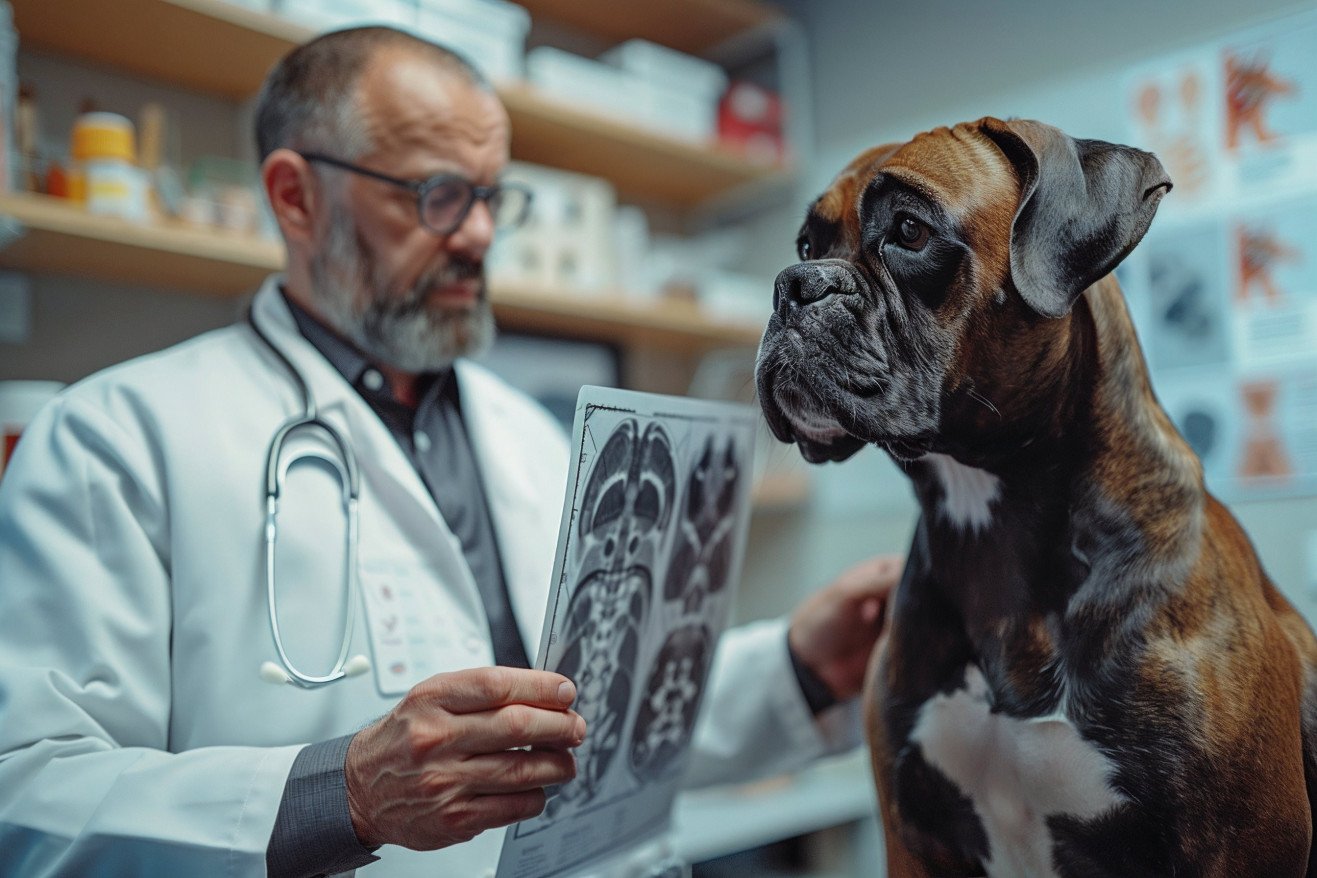How Many Ribs Do Dogs Have? Exploring Canine Anatomy
13 March 2024 • Updated 12 March 2024

The number of ribs a dog has is more than just a fun fact; it’s also important to a dog’s overall health and well-being. On average, dogs have 13 pairs of ribs, which equals 26 ribs in total. These ribs shield a dog’s heart and lungs and are important for respiration and a dog’s overall body shape.
This article goes beyond the basics of how many ribs dogs have to explore a range of scientific fields, including veterinary medicine, comparative anatomy, and developmental biology, to explain the details of how ribs develop, how the number of ribs can vary between different dog breeds, and how the number of ribs a dog has can affect its health.
In doing so, it provides a comprehensive look at how this particular aspect of canine anatomy fits into larger biological and evolutionary contexts.
How many ribs do dogs have?
The Science Behind How Dog Ribs Form
Rib development in dogs, and all vertebrates, is the result of a highly coordinated process involving specific developmental compartments. A study published on PubMed goes into detail about these compartments using chick embryos as a model.
It explains that the proximal part of the rib (the part closest to the spine) is induced by the notochord and neural tube, possibly through the action of signaling molecules like Hedgehog. Meanwhile, the distal part of the rib (the part that extends into the chest) is induced by the surface ectoderm.
Molecular signaling pathways, including the Hedgehog pathway, are important for rib patterning. A study published in eLife shows how the Hedgehog protein controls the differentiation of progenitor cells into rib bone or cartilage during mouse embryogenesis using genetically modified mice, which can be compared to how ribs develop in dogs.
Variations in rib number can also occur during the embryonic period, as has been observed in other vertebrates. A study in the Journal of Anatomy describes rib development in the chicken embryo and shows that transient variations in the number of ribs, including the presence of an extra eighth rib, can happen.
Learning more about the genetic and developmental factors that control rib patterning and the number of ribs is important because it helps us understand the biological basis of dog anatomy and health. This, in turn, can help researchers learn more about breed-specific differences and the impact of rib development abnormalities in dogs.
Hox Genes and the Genetics of Canine Rib Development
Hox genes are a key part of a dog’s genetic code and are responsible for the basic plan of a dog’s rib count. These genes are responsible for the formation of the ribs and also contribute to breed-specific differences.
A report from EurekAlert! describes the relationship between Hox6 and Hox10 genes and how the two genes’ levels must be in balance to regulate rib development. The report also explains that muscle genes are expressed before rib genes, which shows how complex the relationship between muscle and bone development is.
The study on cervical ribs also shows that breed-specific differences in rib count are especially common in Pug dogs, according to a study from PMC. This congenital trait may be a sign of deeper genetic issues, especially since Pugs are more likely to have cervical ribs, which may be linked to other congenital vertebral malformations.
While genetics play a role, environmental factors like diet and exercise may also play a role in determining rib count, although this area of research is less well-defined.
The need for genetic testing is clear and will help researchers and veterinarians predict and understand rib abnormalities in dogs. As we continue to learn more about the genetic factors that make up the framework of our canine companions, we will gain a better understanding of their anatomy and be able to provide better care.
Rib Variations in Different Dog Breeds
While the average dog has 13 pairs of ribs, the number of ribs can vary between breeds. There are a number of genetic and developmental factors that can lead to variations with clinical significance.
For example, a paper in PMC reported on a mixed breed dog with bilateral cervical ribs, a rare occurrence in dogs. This congenital anomaly, which has been more commonly studied in human medicine, demonstrates that rib count variations have real-world implications for canine health, rather than just being of academic interest.
These variations can be clinically insignificant or clinically significant, leading to potential respiratory problems or impacting the severity of other thoracic conditions. Breed standards, which are designed to maintain a consistent look, may inadvertently perpetuate certain rib structures and counts that could be protective against certain health issues or increase the risk of certain health issues.
Instances like the mixed breed dog with cervical ribs highlight the importance of veterinarians being aware of these anatomical variations. With the interplay of genetics, the environment, and breed standards, it’s important to recognize the significant health impacts of rib count variations, and this underscores the need for continued research into canine anatomy and health.
Evolutionary History of Dog Ribs
Vertebrates have evolved a complex ribcage structure as an evolutionary response. A study highlighted by ScienceDaily notes that in early tetrapods, ribs were initially used to help with support during aquatic locomotion. However, as these tetrapods moved onto land, they repurposed rib movement to help with a new action: breathing. This was an important evolutionary change that saw ribs move to expand and contract the chest cavity, enabling aspiration breathing on land.
A study in Scientific Reports backs up this evolutionary story by using cutting-edge imaging to look at the way lizard ribs move and how this movement has been co-opted over time. As noted by Britannica, the ribcage evolved to help protect internal organs and support the musculature of the trunk, and there are species-specific differences in the ribcage.
From the homoplastic evolution of lumbar ribs in Mesozoic mammals to other adaptations, this has continued to the present day, as shown by the ribcage of dogs. Modern vertebrates, from dogs to whales, have a variety of rib pairs, which demonstrates the developmental and evolutionary importance of the ribcage.
It’s an important part of how well dogs can move and survive in their environments and not just an evolutionary relic. Knowing this history helps us understand the dog’s anatomy and how it impacts their health and movement.
Rib Abnormalities and Their Impact on Canine Health
Rib abnormalities in dogs, including rib neoplasms, are a matter of clinical importance. One article on PubMed notes that clinical signs like dyspnea and thoracic swelling can be indicative of rib tumors, and osteosarcoma is the most common type. Early detection is key, and radiography, which is the main way these tumors are diagnosed, can show osteolysis and pleural effusion.
Veterinarians usually treat rib neoplasms with surgery. The Merck Veterinary Manual explains that surgical correction can be important in the management of bone disorders. VCA Animal Hospitals also note that wide surgical margins are important when removing chondrosarcomas, a type of rib tumor in dogs.
The prognosis for dogs with rib abnormalities can vary and depends on the type of neoplasm, the stage at which it’s diagnosed, and whether or not there are metastases.
Regular veterinary care is important for the early detection and treatment of rib abnormalities, which can greatly improve a dog’s quality of life and life expectancy after diagnosis. When you take into account how closely a dog’s rib count is tied to its overall health, the importance of regular veterinary care and monitoring can’t be overstated.
Conclusion: The Number of Ribs in Dogs and Its Implications for Health
Throughout our investigation of dog ribs, we have uncovered the complex biological factors that determine the average number of ribs in dogs, which is 26. Far from just being bones, these ribs are a critical protective barrier for the dog’s internal organs and play a role in respiration.
Our exploration through developmental biology has revealed how rib development is determined, and in the process, it has demonstrated how genetic regulators like Hox genes and Hedgehog signaling pathways pattern and potentially impact variation.
The evolutionary history of dog ribs has explained why they are present, from the needs of early tetrapods to the survival benefits of ribs in a variety of environments.
On a clinical level, a detailed knowledge of the number of ribs and the issues associated with it is essential for maintaining a high level of care in veterinary medicine. The knowledge of rib structure and count is essential for the detection of rib neoplasms and the treatment of congenital abnormalities.
As research continues to uncover the details of dog anatomy, it serves as a reminder of the complex interaction between genetics, the environment, and evolutionary history that shapes the lives of our canine friends. Through ongoing research and medical care, we can ensure that our knowledge of dog health is as strong and protective as the ribs that are part of our dogs’ anatomy.


